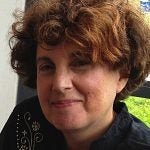Exhibit challenges us to rethink our image of Native Americans
The image many of us conjure of Native American Indians is based on what we see in movies or on TV. We might picture a spiritual figure, in tune with nature and horses; or possibly a leathery-skinned man in a feathered headdress riding off into the sunset. We may imagine them in conflict with white people. Type American Indian into Google images and the results show feathered men with long braids and strings of beads at their chests.
“However, the image of the professional photographer, the musician, the teacher, the doctor—they are largely absent” from the public media, says photographer and social documentarian Matika Wilbur in a 2013 TEDx talk. “People dress as Indians for Halloween. We are not Halloween costumes.” An exhibit of her photographs, Project 562: Changing the Way We See Native America, is on view at the Silva Gallery at Pennington School through March 9 with a reception March 1, 6 to 8 p.m.; Wilbur will give a talk at 7 p.m.A member of the Swinomish and Tulalip Tribes of the Pacific Northwest, Wilbur has been on the road since 2012, working on Project 562, which aims to photograph citizens of each federally recognized tribe. Her goal is to get the public to recognize America’s indigenous communities, with all the details of their diversity and the contemporary Indian identity. Indian Americans make up 1.6 percent of the U.S. population. Native Americans are not a vanishing race, she says. By documenting them she can show who they really are—people protesting fracking, for example, or clamming while wearing a bikini on Cape Cod—and humanize them.A little more than three years into the project, Wilbur has photographed over 250 tribes, and estimates she has years to go to in photographing, cataloging and archiving the material. She hopes to complete a fine arts book series, curricula, documentary and project-derived fashion. Some of her work has been exhibited at the Seattle Art Museum, the Burke Museum of Natural History and Culture, the Tacoma Art Museum, the Royal British Columbia Museum of Fine Arts, and the Nantes Museum of Fine Arts, France.Wilbur has come to believe that Indian identity is inextricably linked to native lands. She developed her own identity growing up in a tribe in Washington State where her parents worked as commercial salmon fishermen. She started doing Project 562 after a dream in which her grandmother, a prominent Swinomish tribal leader, urged her to return home from a South American assignment and begin photographing her own people. Wilbur first focused on portraits of Coastal Salish elders in We Are One People. The exhibit at the Silva Gallery features 24 images from the artist’s Natural Wonderment series.When Native American youth see misrepresentations of their people in media, it leads to low self-esteem, says Wilbur, and limits what they believe they can become. “How can we be perceived as modern American people when we are continually shown as the leathered and feathered vanishing race from another century,” she posits.
“The noble savage or spiritual warrior, as safe keeper of white people, is not who Native Americans are today.” Her work counteracts these images to show positive indigenous role models. To do this she has driven hundreds of thousands of miles and shot thousands of roles of film. Yes, Wilbur works in film to create silver gelatin black and white prints. Even though it’s more complicated than digital imagery, it helps to convey the timeless story she seeks to tell.Living on the road, out of an RV, Wilbur sends the film to a master printmaker in Santa Barbara, California. From there the prints are sent to an uncle who frames them, and then a studio assistant who ships them to galleries and museums. In addition to making their portraits, Wilbur is making audio recordings, video and blog posts, and is working on a book that will tell the stories through images and words. In 2012, Wilbur left her job as a high school teacher, sold mostly everything from her Seattle apartment, and hit the road, leaving behind a budding relationship. Wilbur has funded Project 562 through two Kickstarter campaigns and has received support from the Surdna Foundation, which seeks to foster sustainable communities in the United States. Expenses include but are not limited to film, printing, gas, lodging, food and equipment. So far she has visited 48 states. Pursuing the lifestyle needed to complete Project 562 has been “a constant struggle to maintain the rigor and balance to stay dedicated and committed to life on the road,” Wilbur admits. “It’s exhausting and overwhelming, sleeping at rest stops, finding a place to shower. And I must go through validation in each community, convincing them I am not the taker of the story but there for the wellness of the community. On a personal level, I miss my family, going to basketball games and being a teacher. It’s hard to leave all the time. But the people I meet are overwhelmingly supportive and kind, and I am grateful for the humanity and compassion I’m shown from strangers when they hear what I’m doing and welcome me to their homes. So many strangers have become good friends. We tend to believe the world is a scary and dangerous place, but there are so many good people. Having kids come up to me and cry when we meet and express gratitude” helps Wilbur start each day.
__________________________________________________________
The Artful Blogger is written by Ilene Dube and offers a look inside the art world of the greater Princeton area. Ilene Dube is an award-winning arts writer and editor, as well as an artist, curator and activist for the arts.
WHYY is your source for fact-based, in-depth journalism and information. As a nonprofit organization, we rely on financial support from readers like you. Please give today.







